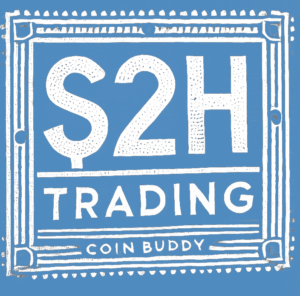Cryptocurrency has rapidly transformed the financial landscape, with thousands of digital currencies now available. Among them, some stand out due to their market adoption, technological innovation, and impact. Here’s a closer look at a few of the most popular cryptocurrencies and what makes them unique.
For a more comprehensive up-to-date list by market capitalization (the amount of total money invested in an asset), click the CoinMarketCap image below.

1. Bitcoin (BTC)
- Launched: 2009
- Creator: Satoshi Nakamoto (pseudonym)
- Market Role: Digital gold
Bitcoin is the first and most well-known cryptocurrency, often considered the benchmark for the crypto market. It was created as a decentralized digital currency to enable peer-to-peer transactions without intermediaries. Limited to a supply of 21 million coins, Bitcoin’s scarcity and security make it a popular store of value.
2. Ethereum (ETH)
- Launched: 2015
- Creator: Vitalik Buterin and team
- Market Role: Platform for decentralized applications (dApps)
Ethereum introduced smart contracts, self-executing agreements that run on blockchain technology. This innovation paved the way for decentralized finance (DeFi), non-fungible tokens (NFTs), and countless other applications. Ethereum is transitioning from proof-of-work (PoW) to a more energy-efficient proof-of-stake (PoS) consensus mechanism with Ethereum 2.0.
3. Binance Coin (BNB)
- Launched: 2017
- Creator: Binance Exchange
- Market Role: Utility token
Originally created to reduce trading fees on the Binance cryptocurrency exchange, Binance Coin has grown into a versatile cryptocurrency. It powers the Binance Smart Chain (BSC), a blockchain platform for dApps, DeFi projects, and token creation. BNB’s utility and strong backing by Binance contribute to its popularity.
4. Tether (USDT)
- Launched: 2014
- Creator: Tether Limited
- Market Role: Stablecoin
Tether is a stablecoin pegged to the value of fiat currencies, primarily the U.S. dollar. It’s widely used by traders to avoid the volatility of other cryptocurrencies while maintaining the ability to move funds quickly. Its stability and liquidity make it one of the most traded cryptocurrencies.
5. Cardano (ADA)
- Launched: 2017
- Creator: Charles Hoskinson (co-founder of Ethereum)
- Market Role: Sustainable blockchain platform
Cardano is known for its scientific approach to blockchain development, focusing on sustainability, scalability, and security. Its proof-of-stake consensus mechanism, Ouroboros, is designed to be energy-efficient while maintaining decentralization. Cardano’s ecosystem supports smart contracts and dApps, with a growing focus on real-world use cases.
6. Solana (SOL)
- Launched: 2020
- Creator: Anatoly Yakovenko
- Market Role: High-performance blockchain
Solana is designed for speed and scalability, capable of processing thousands of transactions per second with minimal fees. Its high throughput and energy efficiency have made it popular for DeFi projects and NFT platforms. Solana’s unique consensus mechanism, proof-of-history (PoH), enhances its performance.
7. XRP (XRP)
- Launched: 2012
- Creator: Ripple Labs
- Market Role: Cross-border payments
XRP is used by financial institutions for fast, low-cost international money transfers. Unlike most cryptocurrencies, XRP is pre-mined, and its supply is controlled by Ripple Labs. Its focus on bridging fiat currencies and blockchain technology has positioned it as a leader in the cross-border payments space.
8. Polkadot (DOT)
- Launched: 2020
- Creator: Dr. Gavin Wood (co-founder of Ethereum)
- Market Role: Blockchain interoperability
Polkadot enables different blockchains to communicate and share data seamlessly. Its multi-chain framework supports a diverse ecosystem of blockchains, enhancing scalability and innovation. Polkadot’s focus on interoperability makes it a cornerstone of Web3 development.
9. Dogecoin (DOGE)
- Launched: 2013
- Creators: Billy Markus and Jackson Palmer
- Market Role: Meme-based cryptocurrency
Initially created as a joke, Dogecoin gained a massive following thanks to its meme-inspired branding and enthusiastic community. Despite its lighthearted origins, it has been used for tipping, charitable donations, and even payments, driven by high-profile endorsements.
10. USD Coin (USDC)
- Launched: 2018
- Creators: Circle and Coinbase
- Market Role: Stablecoin
Like Tether, USD Coin is a stablecoin pegged to the U.S. dollar. Its focus on transparency and regular audits ensures trust in its 1:1 backing with fiat reserves. USDC is widely used in DeFi, trading, and payments.
Conclusion
The cryptocurrency market is diverse, with each coin or token offering unique features and use cases. Whether it’s Bitcoin as a store of value, Ethereum as a platform for innovation, or stablecoins for financial stability, these popular cryptocurrencies play a significant role in shaping the future of digital finance. Understanding their characteristics and purposes is key to navigating the ever-evolving crypto landscape.
